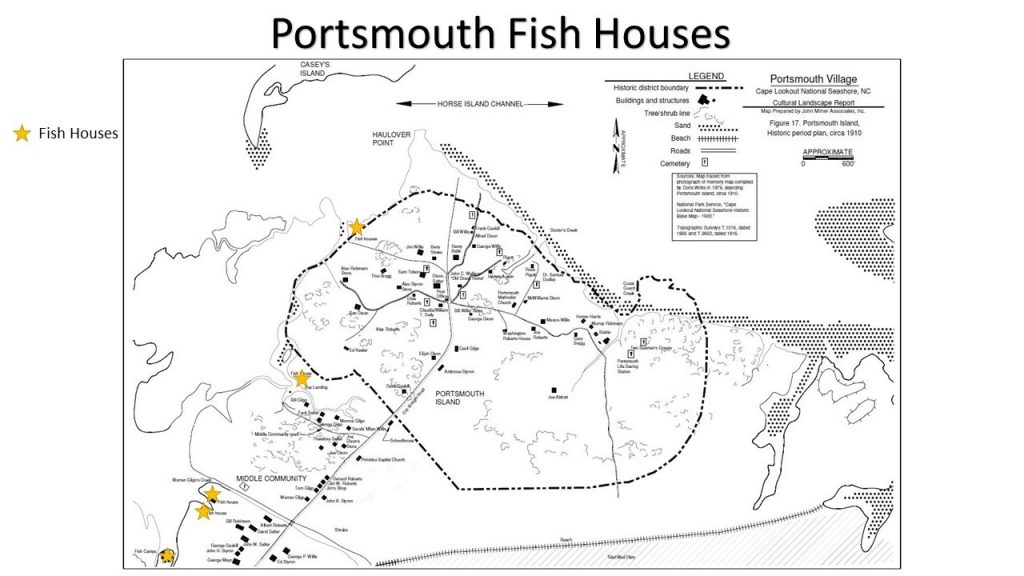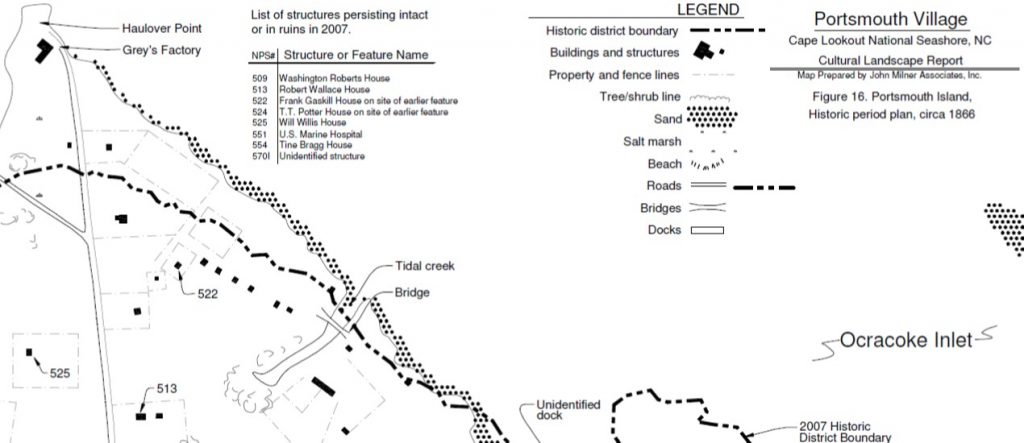During the Civil War most inhabitants evacuated Portsmouth. Historians speculate that the island never fully recovered its population or its economic viability. In 1867, the customs house was abolished. The population declined, and the number of residences in the town dwindled to fifty-nine in 1870 and forty-four by 1880. The shifting sands of the Outer Banks had closed Ocracoke Inlet to shipping by the late 1800s, forcing the decimated population to turn to fishing for its livelihood (Milner 2016:2). Currently there are 5 fish houses on the island and location of a fish factory know as Greys Factory shown on a historic map near Haulover point in 1866. The factory was an attempt to develop a menhaden processing industry on the island. It was built by a stock company from Rhode Island known as the Excelsior Oil and Guano Company. It was supplied with modern apparatus for cooking and processing the fish. It proved to be not very profitable and was abandoned (Milner :32). While shifting sand often prevented boats from reaching Greys factory, these environmental features were useful for techniques used to fish for mullet. Fishers worked together in two or three skiffs hauling nets and landing or “pounding” the fish on an exposed shoal. In order to prevent the mullet from escaping they immediately broke their necks, and later removing their backbones and intestinal cavities. The Portsmouth fishermen developed a reputation in the fisheries markets for these local traditions (North Carolina. Geological survey, 1891-1925.M. Uzzell & Company, 1907:408)


